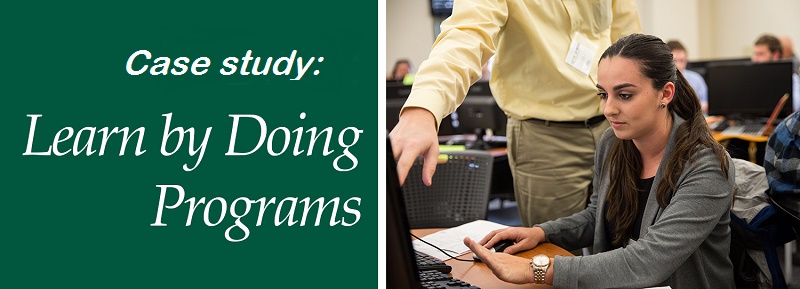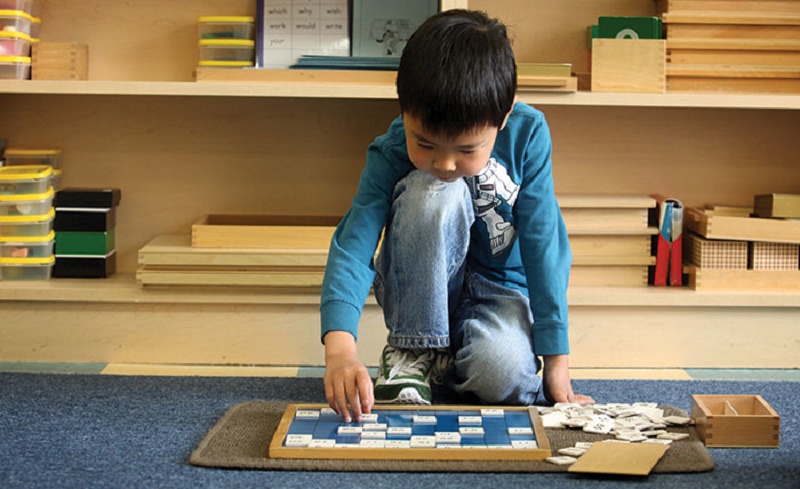A great interview by Eduard Punset with Roger Schank, where he exposes important and very real points of view about the work of schools and teachers. It questions the current role of schools, more focused on exposing theory than on encouraging practice and gaining experience. They are centered on learning through memorization and that is how it ends up being forgotten. Consider that the only effective way to learn by doing.
The case study of learning by doing

Roger Schank, Ph.D. in linguistics from the University of Texas, is an expert in Artificial Intelligence that investigated how to educate computers and ended up discovering that humans educate us badly. Schank was a professor of Computer Science and Psychology at Yale University and, later, director of the Artificial Intelligence Project of the same institution. In 1989, he launched the Institute for the Education Sciences (ILS) within the Northwestern University of Chicago; In the ILS he focused his research on the development of educational software, especially for the field of employee training. He has also been a professor at the Universities of Standford and Carnegie Mellon.
According to Roger Schank, you only “learn by doing” and you can not learn without practice and experience …. but schools do not do it that way. The educational system has remained the same for several hundred years: “a man enters and gives a class …. “, That then few remember. Computers are a solution, but they do not have to be “the solution”, because the key is the education system. The computer itself has no relevance, is a device that allows you to have experienced if you create good software to accompany it. For Roger Schank, teachers should concentrate on trying to understand what students can do and trying to help them do it while practicing and improving.
Many times we study batteries and stacks of books, we prepare ourselves in a certain subject, we believe we understand everything we read but … after a while (not necessarily very long) we feel that the information has disappeared from our brain.
And not to mention when we have to face the world of work and we are far from knowing how to apply all this theory “learned” to real situations.
However, when putting this knowledge into practice in cases of daily life, we notice how we began to understand in detail the theory studied previously. And that is why today, the case method is considered an effective methodology for learning that has been increasingly extended in educational areas.
What is the method of the learn by doing?

Wikipedia defines it as follows:
“The case method also called case study or case method is the study of a specific situation to learn or improve in a field of knowledge.”
In other words, through this method students have the opportunity to face real-world cases, to analyze them, propose actions and discuss them as a team, allowing to put into practice the theory learned and evaluate possible solutions.
The origin of this methodology goes back to the year 1914, in the School of Law of the University of Harvard, with the purpose of which the students learned laws through situations of the real life … And it gave the result.
Complements the theory
The case method connects theory with practice, knowledge with the real world. In this way, the student applies his theoretical knowledge in real situations of professional practice. This allows you to fix the knowledge.
Encourages the development of critical judgment and decision making
The student is obliged to study a case and, based on the data presented, propose ways of solutions or improvements. This is how he develops his critical judgment and increasingly refines his reasoning and intuition. This goes hand in hand with decision making since you must choose an option among a range of possible solutions, evaluating the pros and cons of each proposal.
Expands the vision before the study of a situation
The student must execute different roles within the same problem, evaluating different perspectives. In this sense, it expands its vision of events, which will result in greater learning to solve subsequent cases.

Promotes teamwork
Teamwork is one of the fundamental aspects of professional success. Through the case method, the student must, first of all, study the case and prepare individuals to then share his point of view with his team. At the end of the day, the team must have proposed a solution route as a result of its previous discussion.
At this point group skills are developed such as communication, negotiation, conflict management.
It allows the development of a methodology for solving problems
The evaluation and preparation of a real-life case individually, allows the student to develop their own work methodology, based on their strengths and weaknesses. A methodology that will serve as a basis when the time comes to face the real world of work.
The classes are participatory

When discussing a case there is no room for boredom or dismissal, full attention is necessary to understand and reason the case. Classes become stimulating and participatory where control passes from teachers to students.
This active participation allows developing communication skills and moving away from the stage fright of speaking in public, vital to be successful professionals.
The case method of learning by doing is the main methodology used in the teaching system of the Business School of Valladolid and, year after year, we find with more than satisfactory results that the best way to learn is by doing, always combining theory with practice.







